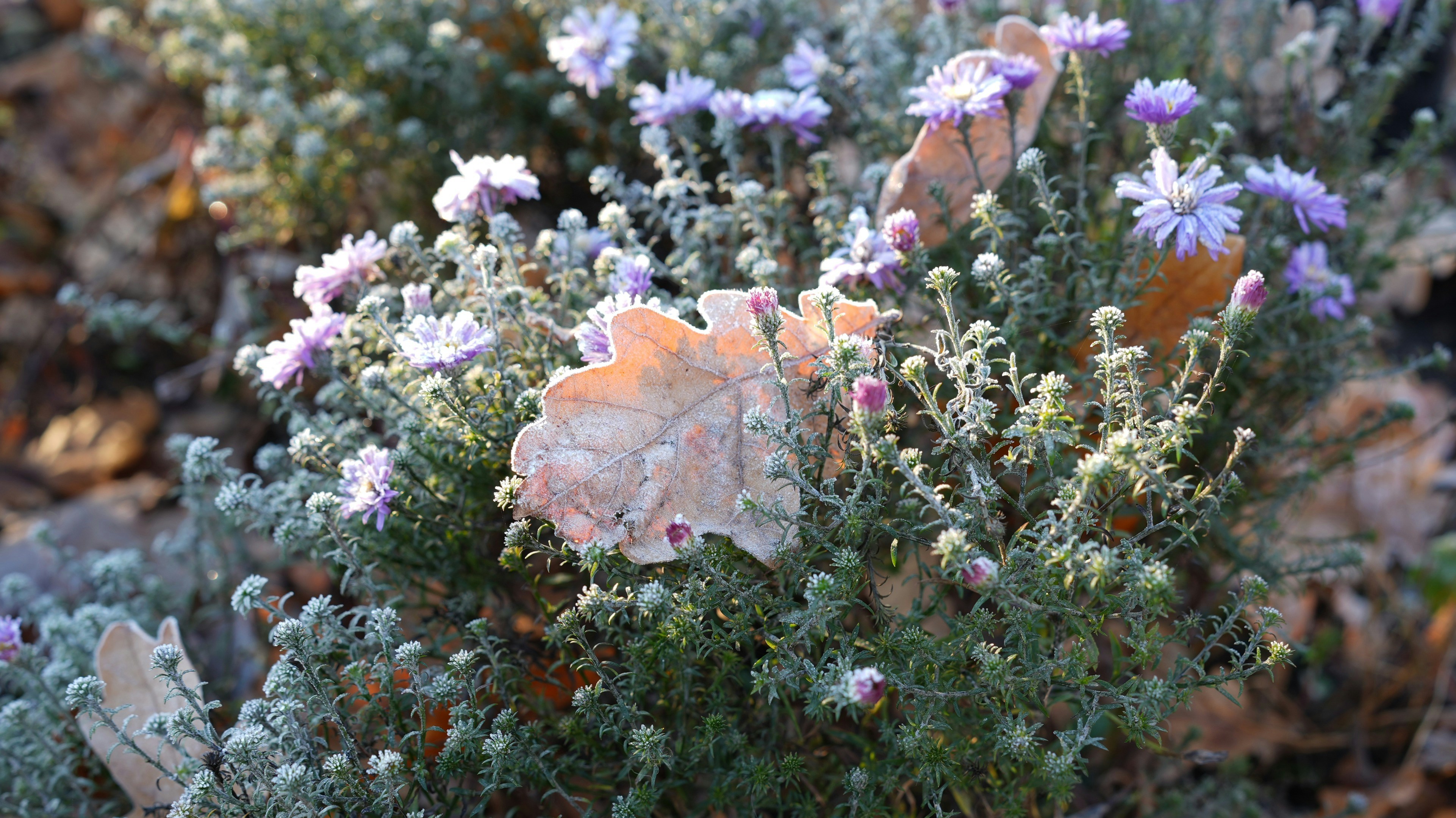As the gardening season winds down and frost edges the mornings, it’s time to tuck your garden in for the winter. Winterizing isn’t just cleanup — it’s protection, preparation, and a promise to your plants that they’ll wake up strong next spring. In Southwest Colorado’s unique mix of cold nights, dry air, and sunny days, a thoughtful fall routine makes all the difference.
Why Winterizing Matters
Putting your garden to bed helps prevent disease, root damage, and moisture loss while ensuring perennials, shrubs, and trees conserve their energy for the growing season ahead. Think of it as pressing “pause,” not “stop.”
Pruning and Cutting Back
What to Cut Back Now
Most perennials benefit from being cut back in fall to reduce disease and tidy up the garden. Leave 2–4 inches of stalk or stem to mark their location and protect crowns from frost heave. Healthy foliage can be composted once shredded, but discard any diseased or pest-damaged material.
Remove annuals once they’ve finished blooming, and dig up tender bulbs such as cannas, dahlias, and gladiolus for winter storage. These won’t survive freezing soil.
What Not to Prune in Fall
Some plants are best left untouched until spring — they either rely on their top growth for winter protection or form buds on old wood that you don’t want to cut away. Generally, you want to avoid cutting back any woody plant in the fall.
Do not prune in fall:
- Hydrangeas (especially bigleaf and oakleaf types)
- Butterfly Bush (Buddleia)
- Blue Mist Spirea (Caryopteris)
- Lilacs
- Forsythia
- Mock Orange (Philadelphus)
- Ninebark (Physocarpus)
- Viburnum
- Roses (Climbers & Shrub Types) — prune only lightly and shape in spring
- Evergreens — conifers, junipers, pines, and spruce shouldn’t be cut back at all
Leaving these unpruned helps protect their buds and branches from desiccation and freeze injury. Once new growth appears in spring, you’ll see exactly where to trim.
General Pruning Tips
1. Know the goal.
Pruning isn’t about forcing shape; it’s about encouraging health and structure. Remove dead, diseased, or crossing branches first.
2. Use sharp, clean tools.
Dirty blades spread disease. Disinfect pruners with rubbing alcohol between plants.
3. Make clean cuts.
Cut just above a leaf node or outward-facing bud at a slight angle to shed water. Avoid leaving stubs, which invite rot.
4. Avoid heavy pruning before hard freezes.
New growth stimulated by pruning won’t have time to harden off before winter, leaving it vulnerable to damage.
5. Leave seed heads for wildlife.
Coneflowers, black-eyed Susans, ornamental grasses, and sedums add beauty and provide seed for birds. You can trim these in early spring instead.
Fall Rose Care
Roses appreciate a little extra attention. Clean up leaf litter around the base to prevent overwintering diseases. When pruning, don’t cut canes lower than 3–4 feet — taller growth protects the plant through winter. In windy spots, bundle canes loosely to prevent breakage and mulch around the crown to insulate roots.
Water deeply before the ground freezes and again during dry winter stretches. Come spring, remove winter damage and shape as needed.
Mulching for Winter
Mulch is your best friend when temperatures swing wildly between freezing nights and sunny afternoons. It keeps soil temperatures stable and prevents roots from heaving.
- Apply mulch once the soil has cooled (around early November).
- Use fine bark, pine needles, shredded leaves, straw, or grass clippings.
- Avoid piling mulch directly over crowns — aim for a 2–4 inch layer around the root zone instead.
Pine needles are especially useful in Southwest Colorado: they insulate without compacting, allow airflow, and add a touch of acidity to our typically alkaline soils.
Watering Before Winter
Even dormant plants lose moisture in dry air. Before the ground freezes, water deeply to hydrate roots. Continue occasional winter watering (once a month on warm days) for trees, shrubs, and established perennials — especially evergreens and newly planted specimens.
Planning Ahead for Spring
Fall is the perfect time to dream. Warm soil and cool air create ideal conditions for amending beds and planting bulbs.
- Work compost into tired areas or plan new beds.
- Plant spring bulbs — daffodils, tulips, crocus, hyacinths, and alliums.
- Make notes for next season’s layout while this year’s successes and struggles are still fresh.
Your Local Winterizing Checklist
✅ Cut back most perennials, leaving short stalks for protection
✅ Skip pruning shrubs like hydrangeas, lilacs, and butterfly bush until spring
✅ Clean and lightly shape roses; protect crowns with mulch
✅ Mulch garden beds in November for insulation
✅ Deep water before ground freeze and during dry winter spells
✅ Plant spring bulbs for early color next year
The Takeaway
Winterizing your garden isn’t about putting it away — it’s about preparing it for renewal. By pruning thoughtfully, protecting the right plants, and maintaining moisture through our dry winters, you’re giving your landscape the best start for spring.
Stay Updated with Our Newsletter or
Follow Us
Join our newsletter to receive the latest updates on promotions, new arrivals, and expert seasonal landscaping tips. Don’t miss out on the chance to enhance your gardening experience!
Follow Us On FacebookFollow Us On Instagram
